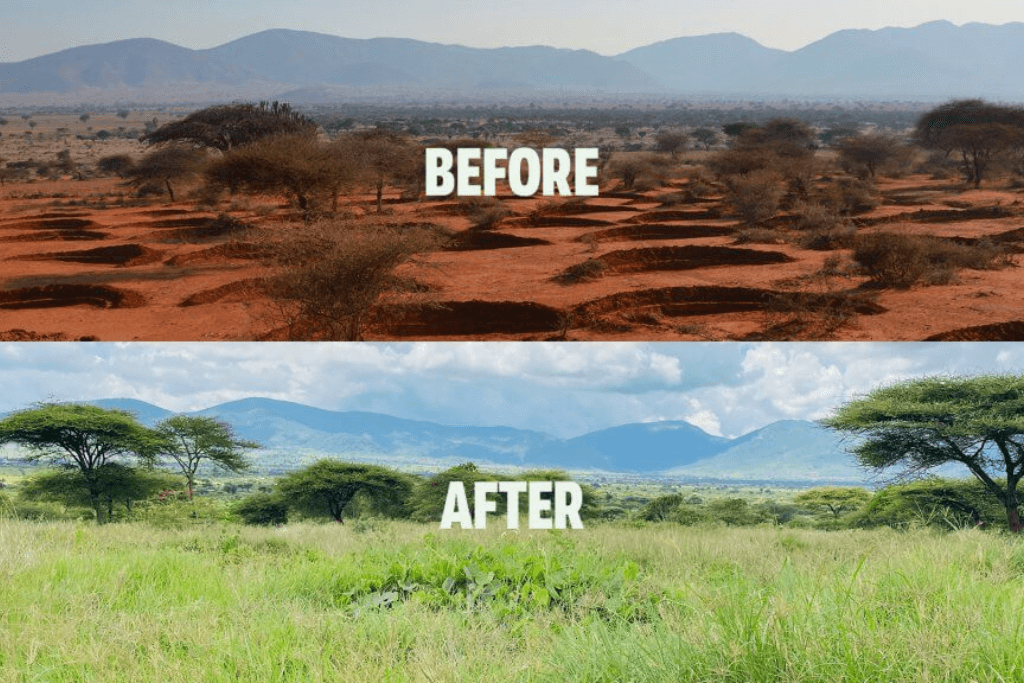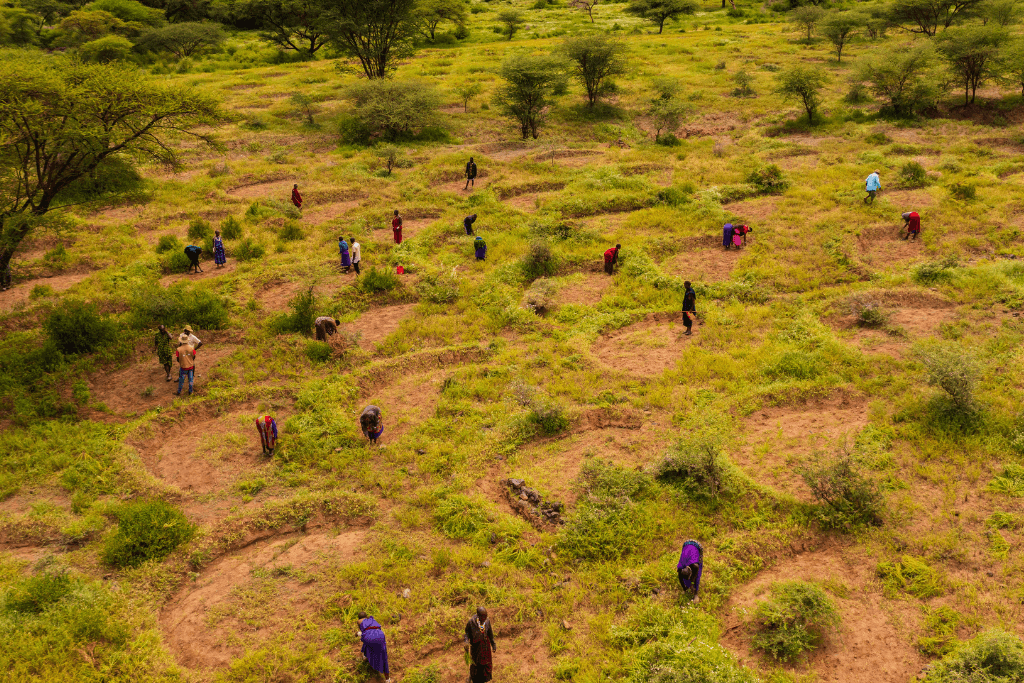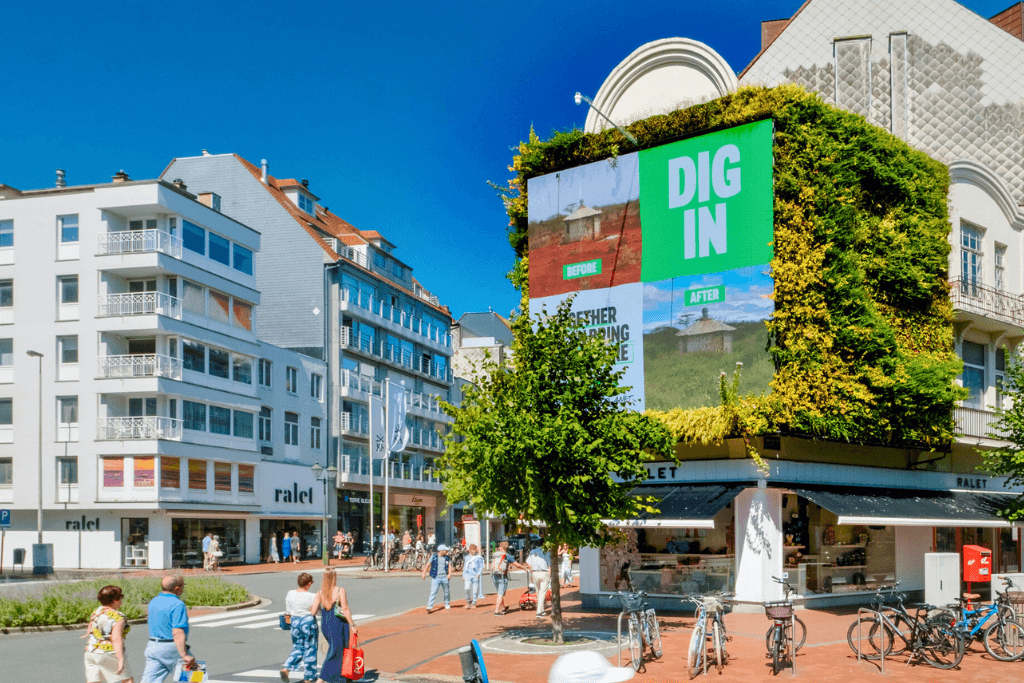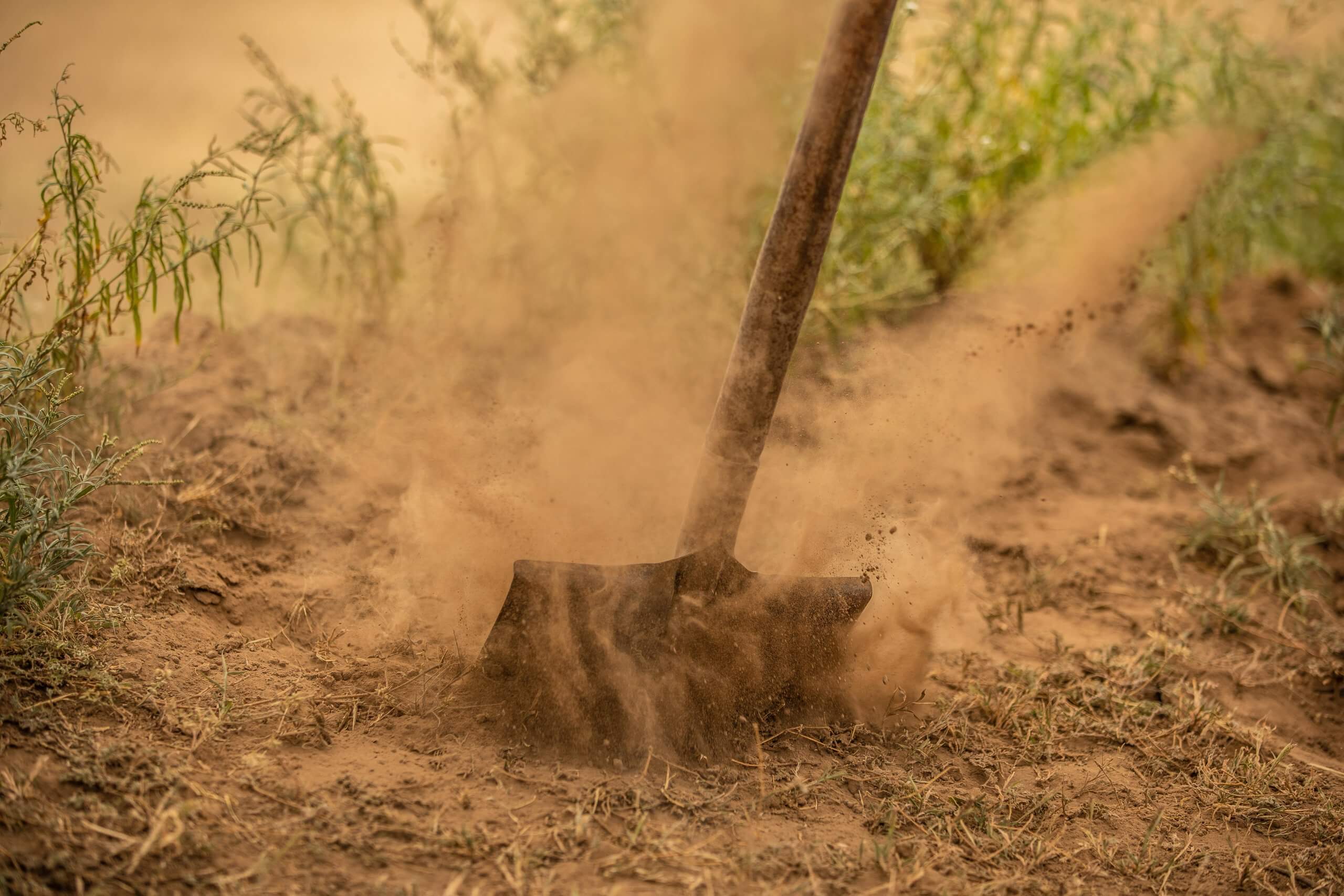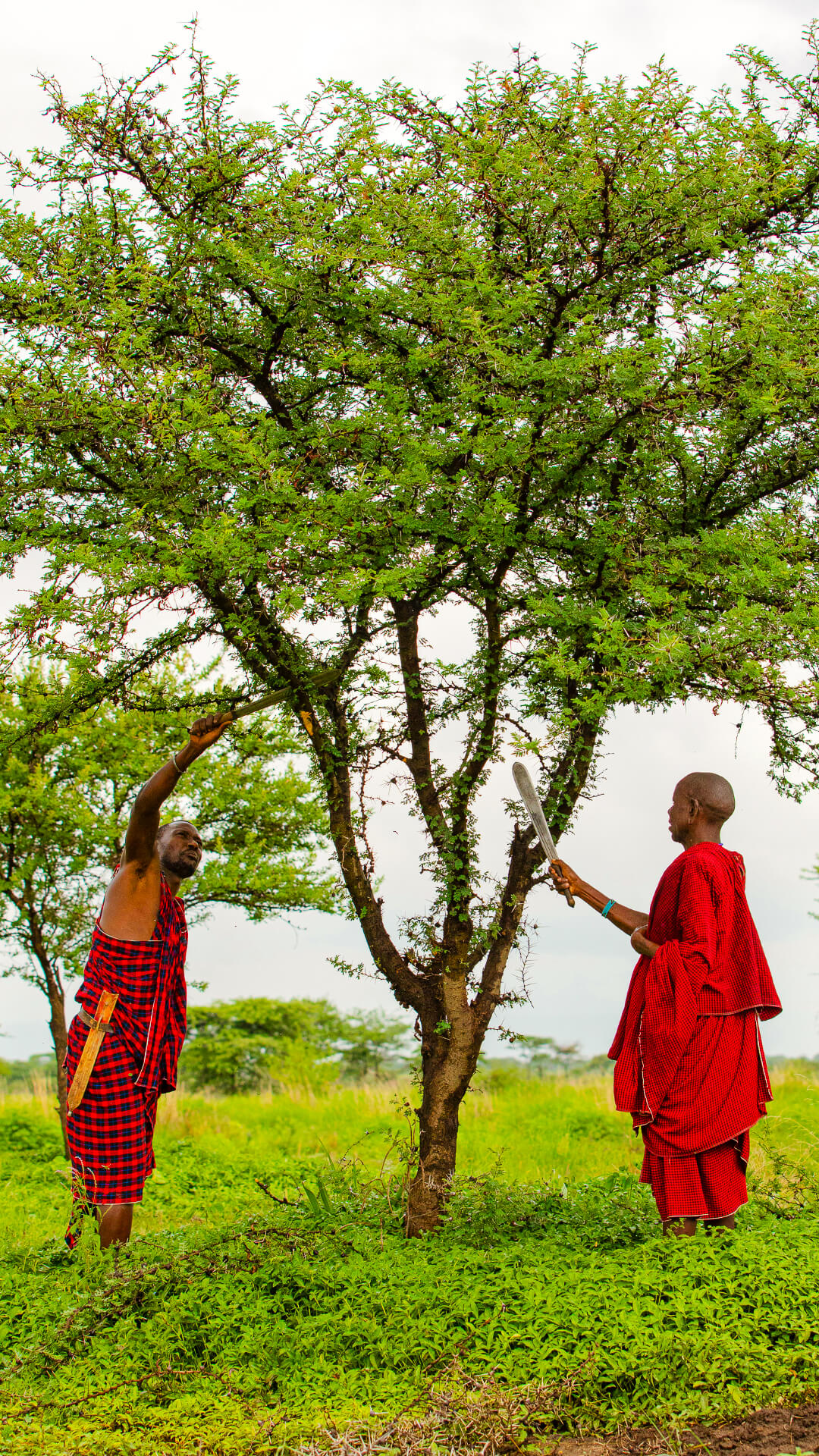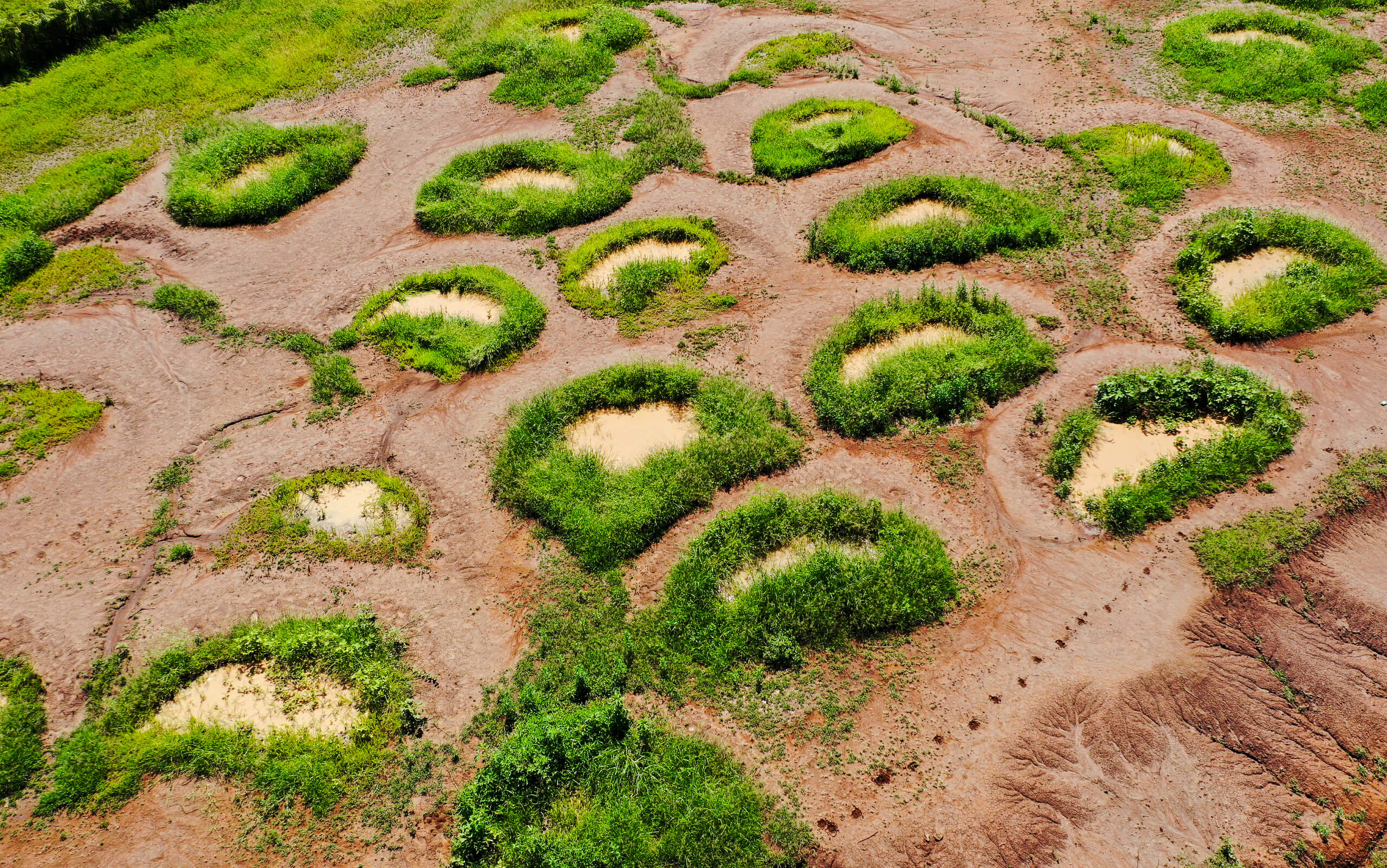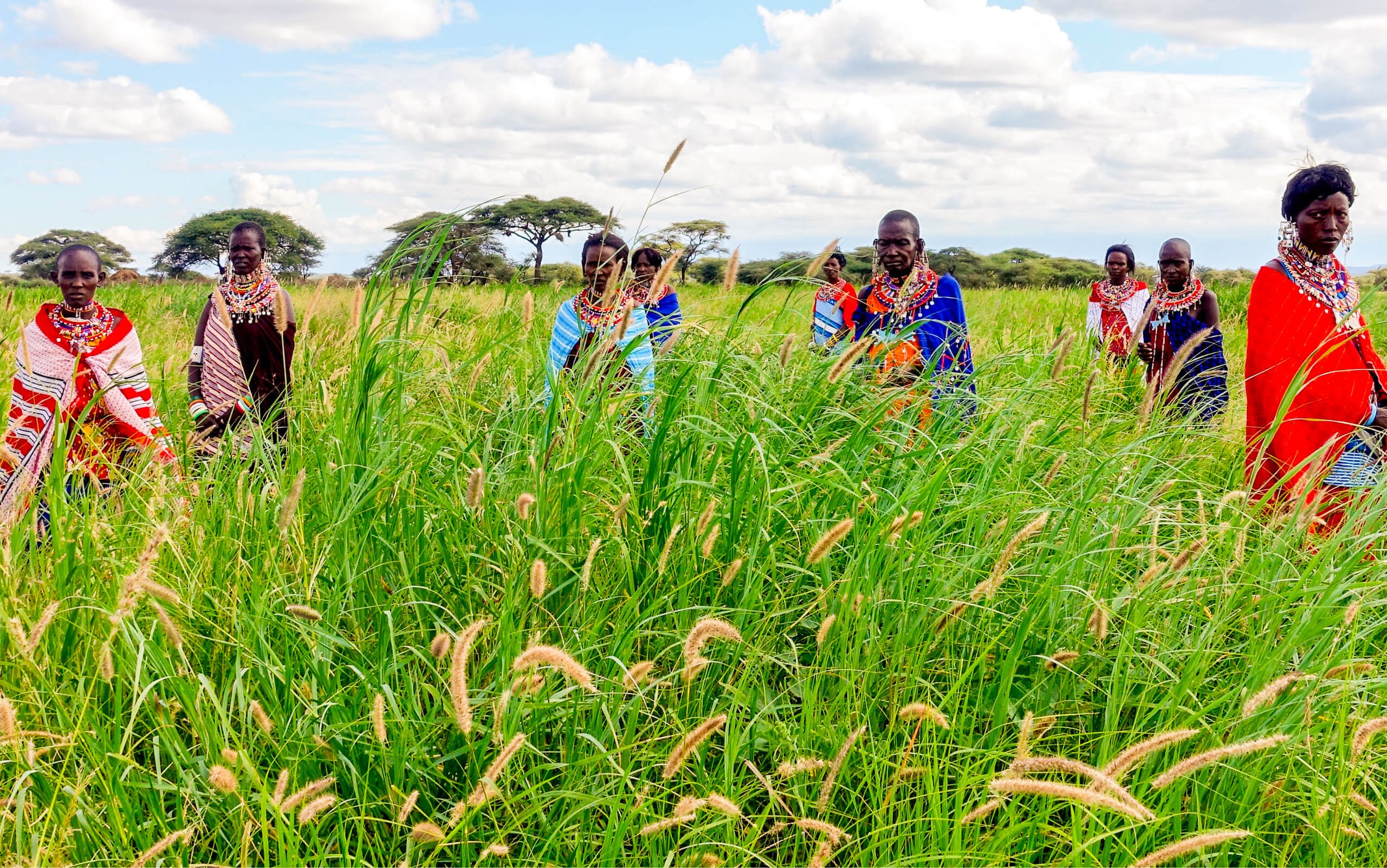More regreening techniques
landscape restoration
Other regreening techniques
Fanya Juu and Fanya Chini
Fanya Juu and Fanya Chini are rainwater harvesting techniques.
Farmers dig trenches along the contours within their farmland to prevent erosion and to capture the valuable rainwater within their land. Fanya Chini means ‘ throw it downwards’ in Swahili. It prevents the rain falling outside the farm from entering the farm, inhibiting erosion of fertile soil. Fanya Juu means ‘throw it upwards’, and prevents the rain falling within the farm to flood away, increasing the water availability for the crops on the land. In the end it helps the farmers to regreen their farms even more! The farmers in the Dodoma region, Tanzania, have implemented the Fanya Juu and Fanya Chini techniques on their land. Learn more about the benefits of Fanya Juu and Fanya Chini in this video.

Grazing management
One of the main causes of land degradation is overgrazing.
Grazing management is thus of great importance. By preventing livestock from grazing in the most vulnerable areas, these areas have time to recover. In our projects we spread the knowledge about the advantages and techniques of livestock and grazing management in various ways, always involving the Maasai communities. This way we aim to make the degraded areas green again.
Grazing management is used in our projects in Amboseli National Park & the Olgulului-Ololarashi Group Ranch and the Kuku Group Ranch in Kenya.
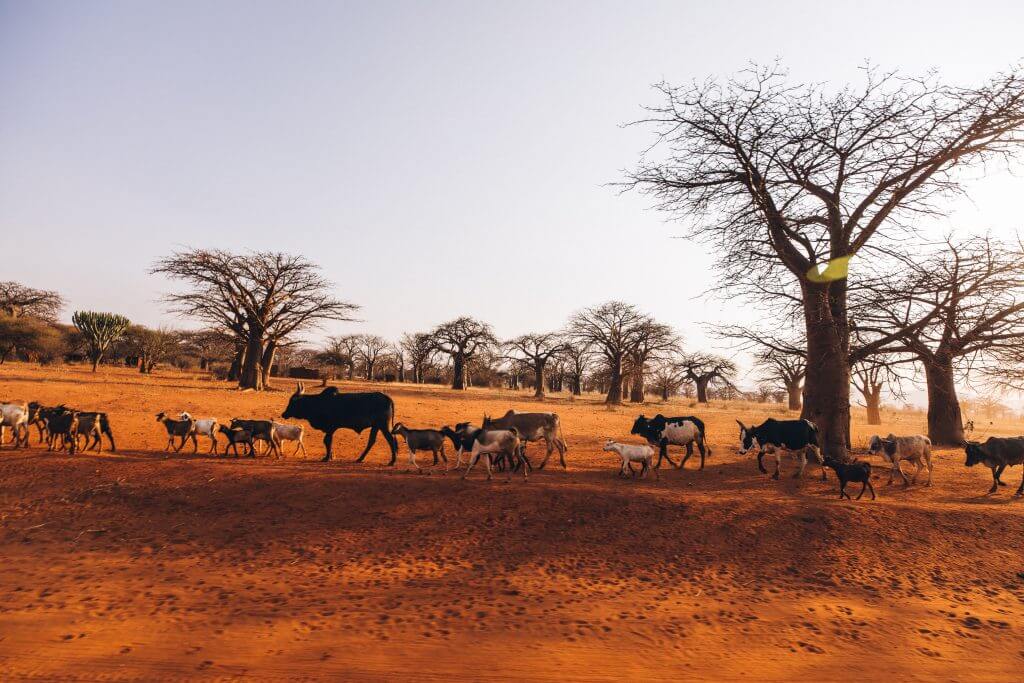
Olopololi plots
An olopololi plot is a traditional Maasai grazing management technique, which became out of practice.
The olopololi plots are marked areas of communal land, in which grazing is only allowed during specific periods, such as at the end of the dry season when there are fewer other places to graze or only for certain animals such as calves.
Together with our local partners we brought this traditional technique back into practice. We use land marks and awareness campaigns, to inform local communities in which areas grazing rules apply. Grazing committees, consisting of community members, are assigned to supervise the sustainable management of the grasslands. They closely monitor the plots, so that the grass has time to grow back.
We’ve implemented olopololi plots in our projects in Amboseli National Park & the Olgulului-Ololarashi Group Ranch in Kenya.
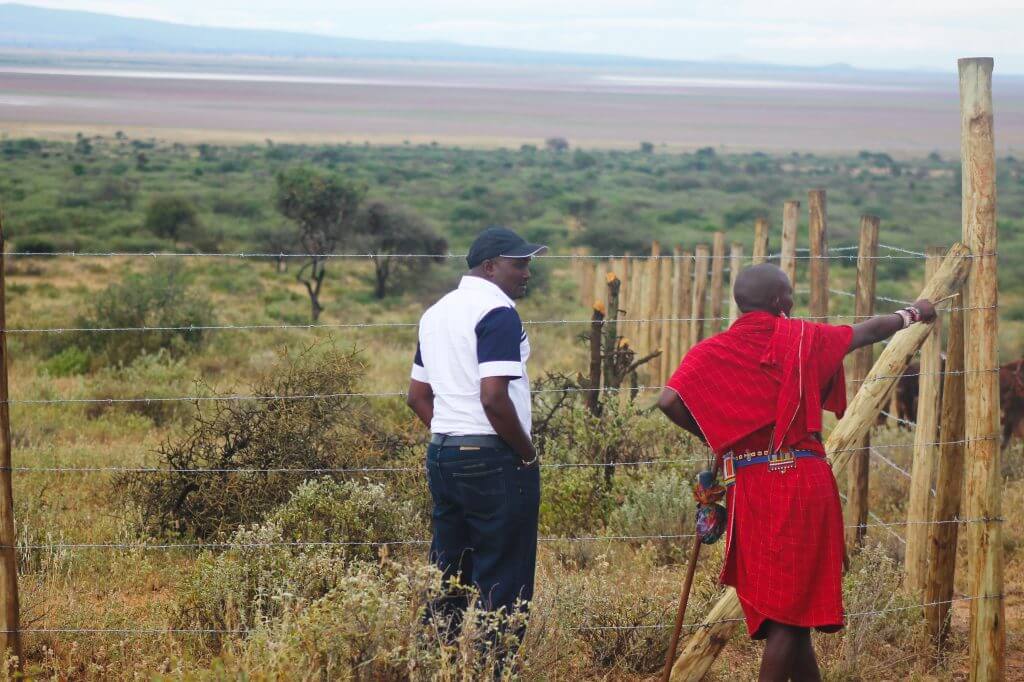
Stone lines
Stone lines are used to capture rainwater and to prevent soil erosion.
They are often used in project areas where many stones are available. Stones break the erosive force of water and increase the infiltration of water in the soil. Organic material and seeds are captured behind the stones, giving the seeds time to sprout, regreening the area. Within our projects we use stone lines in the Kuku Group Ranch.

Woodland exclosures
Due to increased grazing pressure by wildlife and livestock, large areas have become devoid of trees.
By temporarily protecting deforested areas from elephants, the previously almost barren areas can turn into savannah woodlands again. This is of major importance for the biodiversity and local climate in the landscape, since it cools down the area and provides shade, food and cover for birds, insects and animals. We’ve implemented woodland exclosures in our project in Amboseli National Park in Kenya.

Even more regreening techniques
There are many more landscape restoration techniques to regreen degraded landscapes. Together with partners SamSamWater and Nature^Squared we developed the online tool Greener.LAND. The tool contains a wide variety of regreening techniques. Based on the characteristics that belong to a specific landscape, the tool advises on which types of interventions are best applicable to that particular land. Clear and basic videos and pictures help the users to apply the specific interventions on their own land. This way everyone can join the Regreen Revolution!
Why regreening
works
Bringing back vegetation has lots of positive effects on the environment, local communities and their livelihoods and biodiversity. By using a diverse range of landscape restoration techniques, we can give nature a hand and bring back vegetation in these degraded areas. When vegetation has returned, it can help to restore an entire area!

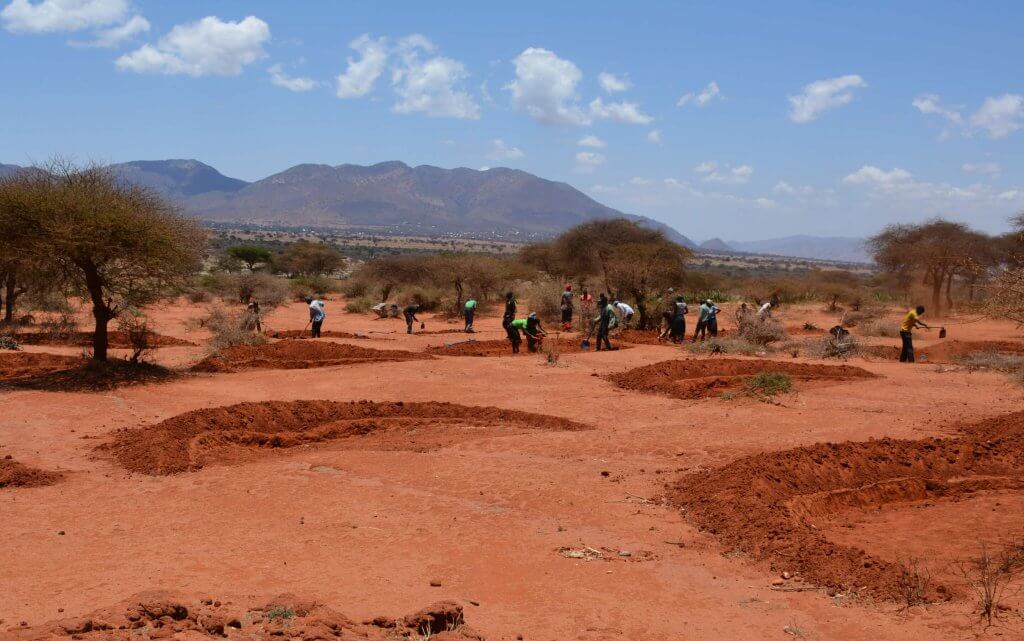
Pembamoto, Tanzania (June 2018 - June 2022)
